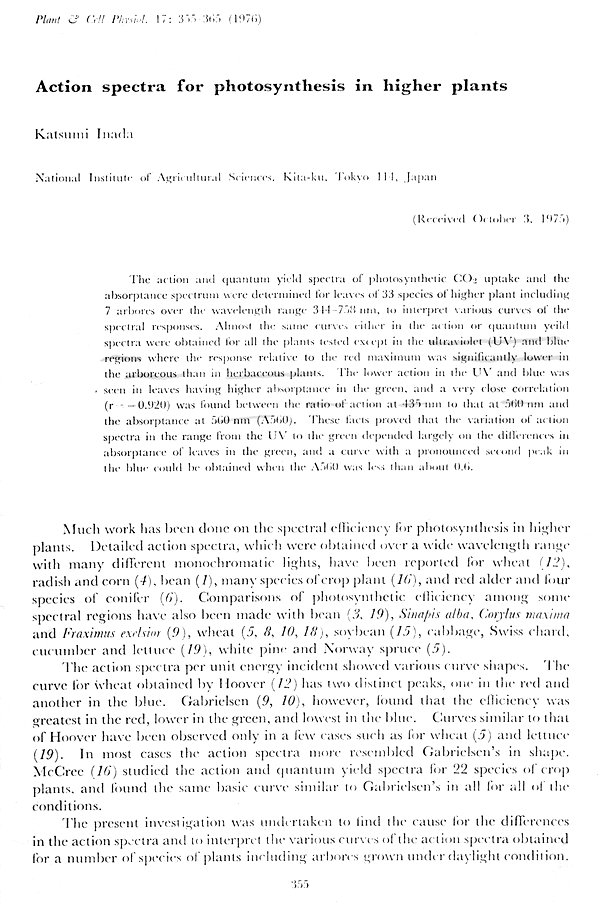Quote:
Originally Posted by ZiGa:S

When we were converting at out faculty we used CIE 1978 standard, so probably this is used the most?!
|
No. From
https://www.ecse.rpi.edu/~schubert/L...le-Chapter.pdf
"This function is referred to as the CIE 1931 V(λ) function. It is the current photometric standard in the United States."
Quote:
Originally Posted by ZiGa:S

The only literature I was able to find to measure each plant's individual "PAR" is one really old book from times that they did not have electronic spectrometers.
...
To convert from spectrum to PAR, different curve is used (at stated above in one post), but I do not know exactly which units and maximum value is used for PAR.
|
You are incorrectly calling yield flux, "PAR".
From
https://en.wikipedia.org/wiki/Photos...tive_radiation
"There are two common measures of photosynthetically active radiation: photosynthetic photon flux (PPF) and yield photon flux (YPF). PPF values all photons from 400 to 700 nm equally, while YPF weights photons in the range from 360 to 760 nm based on plant's photosynthetic response.[6]"
Quote:
Originally Posted by ZiGa:S

IMAGE: PAR conversion:

|
This is some sort of average that some committee pulled out of their ass.
Here are photosynthetic action spectra for 33 different plant species:



Usages of such curves and PAR concepts are inaccurate because:
1. They ignore the Emerson Enhancement effect, see:
https://en.wikipedia.org/wiki/Emerson_effect
2. Plants are often grown in reflective environments such as growth chambers. A plant within a perfectively reflective environment with absorb 100% of all wavelengths of electromagnetic radiation. Therefore an imperfect reflective environment will tend to flatten the photosynthetic response to various wavelengths by an unknown amount.
3. Plants adapt to lighting conditions over time after which they exhibit different photosynthetic action spectra.